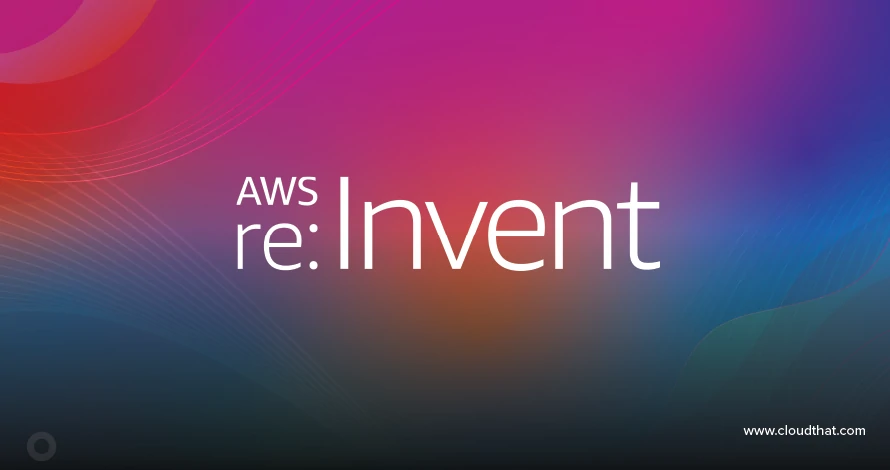|
Voiced by Amazon Polly |
Amazon SageMaker offers a powerful platform for building, training, and deploying machine learning models. However, the flexibility and scalability of the cloud can sometimes lead to unexpected costs. This blog post explores practical strategies to optimize your SageMaker spending without compromising performance.
Explore and Interpret Information in an Interactive Visual Environment
- No upfront cost
- Row level security
- Highly secure data encryption
1. Right-Sizing Your Instances:
Choosing the appropriate instance type is crucial. Over-provisioning leads to wasted resources, while under-provisioning can hinder performance.
- Start Small, Scale Up: Begin with smaller, less expensive instances for initial experimentation and prototyping. Scale up to larger instances only when necessary for production training or handling larger datasets.
- Monitor Resource Utilization: Use Amazon CloudWatch to monitor CPU utilization, memory usage, and network traffic during training. Identify bottlenecks and adjust instance sizes accordingly. A consistently low CPU utilization suggests you might be able to downsize.
# Example: Monitoring CPU Utilization using boto3
|
1 2 3 4 5 6 7 8 9 10 11 12 13 14 15 16 17 18 19 20 21 22 23 24 25 26 27 28 29 30 31 32 33 34 35 36 37 38 39 40 41 42 43 44 45 46 47 48 49 50 51 52 53 54 55 56 |
import boto3 cloudwatch = boto3.client('cloudwatch') # Replace with your training job name training_job_name = 'your-training-job-name' response = cloudwatch.get_metric_data( MetricDataQueries=[ { 'Id': 'cpuUtilization', 'MetricStat': { 'Metric': { 'Namespace': 'AWS/SageMaker', 'MetricName': 'CPUUtilization', 'Dimensions': [ {'Name': 'TrainingJobName', 'Value': training_job_name} ] }, 'Period': 300, # 5 minutes granularity 'Stat': 'Average' }, 'ReturnData': True }, ], StartTime=datetime(2025, 1, 1), # Example start time EndTime=datetime.now() ) # Process the response to analyze CPU utilization # ... |
- Consider Spot Instances: For fault-tolerant training jobs, leverage SageMaker Managed Spot Training. Spot instances offer significant discounts compared to on-demand instances, but can be interrupted with short notice. SageMaker handles interruptions gracefully, restarting your training job from the last checkpoint.
2. Optimizing Training Jobs:
- Early Stopping: Implement early stopping to prevent training from continuing unnecessarily once the model’s performance plateaus or starts to degrade. This saves both time and compute resources. Most training frameworks and SageMaker’s built-in algorithms support early stopping.
- Hyperparameter Tuning: Efficient hyperparameter tuning can lead to better models with less training time. Use SageMaker’s hyperparameter tuning capabilities to automate the search for optimal parameters.
- Data Preprocessing: Optimize data preprocessing steps to minimize the amount of data that needs to be loaded and processed during training. Consider using SageMaker Processing jobs for efficient data transformation.
- Algorithm Selection: Choose the most efficient algorithm for your task. Some algorithms are more computationally expensive than others.
- Distributed Training: If handling large datasets, consider distributed training with SageMaker’s built-in distributed data parallelism. This can reduce training time and optimize compute resources.
3. Managing Endpoints:
- Right-Size Endpoint Instances: Similar to training instances, right-size your endpoint instances based on the expected traffic and model complexity.
- Auto Scaling: Configure auto scaling for your endpoints to dynamically adjust the number of instances based on real-time traffic demands. This prevents over-provisioning during low traffic periods.
- Batch Transform: For offline inference tasks, use SageMaker Batch Transform instead of real-time endpoints. Batch Transform processes large datasets in batches, which can be more cost-effective than running continuous endpoints.
- Stop Unused Endpoints: Don’t leave endpoints running when they are not in use. Shut them down to avoid unnecessary charges. Automate this process using scripts or AWS Lambda functions.
# Example: Stopping a SageMaker endpoint using boto3
|
1 2 3 4 5 6 7 8 9 10 |
import boto3 sagemaker = boto3.client('sagemaker') endpoint_name = 'your-endpoint-name' sagemaker.delete_endpoint(EndpointName=endpoint_name) |
4. Data Storage and Transfer:
- Use S3 Lifecycle Policies: Configure S3 lifecycle policies to move less frequently accessed data to cheaper storage tiers (e.g., Glacier).
- Compress Data: Compress your datasets before storing them in S3 to reduce storage costs and data transfer fees.
- Reduce Data Transfers: Minimize data transfers between AWS regions to avoid high inter-region transfer costs. Keep storage and compute resources in the same region.
5. General Best Practices:
- Monitor Costs Regularly: Use AWS Cost Explorer or Cost and Usage Reports to track your SageMaker spending and identify areas for optimization.
- Tag Resources: Tag your SageMaker resources (training jobs, endpoints, etc.) to organize costs and allocate budgets effectively. This enables cost analysis by project, team, or application.
- Reserved Instances: For consistent, long-term workloads, consider purchasing reserved instances for SageMaker to get discounted pricing.
- Use AWS Budgets: Set cost budgets with alerts to monitor and control expenses in real time.
Practical Example: Optimizing a Training Job
Let’s say you’re training a deep learning model. You start with a ml.p3.2xlarge instance. After monitoring CPU and GPU utilization, you notice they are consistently below 50%. You could try a smaller instance like ml.p3.xlarge. You also implement early stopping, which reduces the training time significantly. Finally, you use SageMaker’s hyperparameter tuning to find better hyperparameters, which further improves model performance and reduces the number of training epochs required.
By applying these cost optimization strategies, you can significantly reduce your SageMaker spending without sacrificing performance. Remember that cost optimization is an ongoing process. Regularly monitor your resource utilization and adjust your strategies as your needs evolve.
Conclusion
By applying these cost optimization strategies, you can significantly reduce your SageMaker spending without sacrificing performance. Right-sizing instances, leveraging spot training, optimizing training jobs, managing endpoints efficiently, and reducing storage costs are crucial steps in keeping expenses under control. Additionally, monitoring costs and using AWS budgeting tools ensures continuous optimization. Remember, cost optimization is an ongoing process—regularly review and refine your strategies to keep costs low while maximizing performance.
Enable smarter efficient workflows through Amazon MLOps Eco-system
- Improve speed
- Reduce time
- Zero downtime
About CloudThat
CloudThat is an award-winning company and the first in India to offer cloud training and consulting services worldwide. As a Microsoft Solutions Partner, AWS Advanced Tier Training Partner, and Google Cloud Platform Partner, CloudThat has empowered over 850,000 professionals through 600+ cloud certifications winning global recognition for its training excellence including 20 MCT Trainers in Microsoft’s Global Top 100 and an impressive 12 awards in the last 8 years. CloudThat specializes in Cloud Migration, Data Platforms, DevOps, IoT, and cutting-edge technologies like Gen AI & AI/ML. It has delivered over 500 consulting projects for 250+ organizations in 30+ countries as it continues to empower professionals and enterprises to thrive in the digital-first world.

WRITTEN BY Swati Mathur
Swati Mathur is a Subject Matter Expert at CloudThat, specializing in Cloud Computing and ML\GenAI. With more than 15 years of experience in IT Training and consulting, she has trained over 1000+ professionals and students to upskill in multiple technologies. Known for simplifying complex concepts and delivering interactive, hands-on sessions, she brings deep technical knowledge and practical application into every learning experience. Swati's passion for public speaking and continuous learning reflects in her unique approach to learning and development.


 Login
Login


 March 20, 2025
March 20, 2025 PREV
PREV











Comments